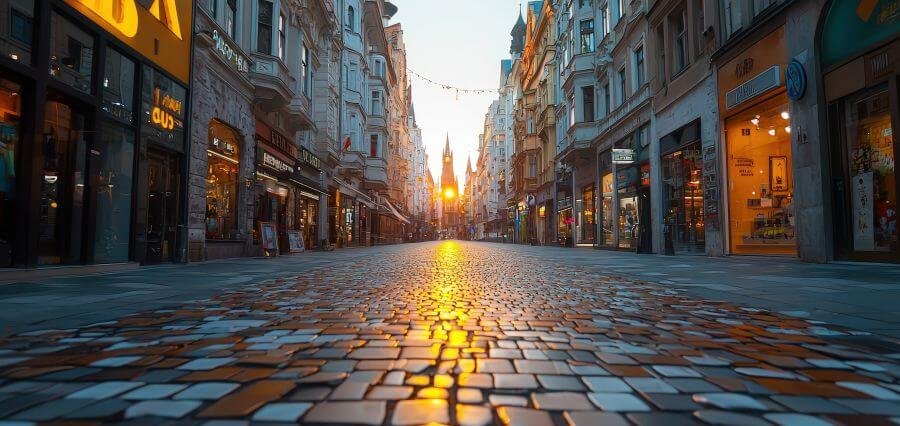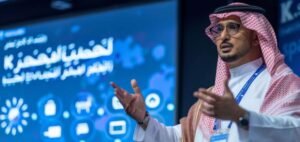In one part of the globe renowned for rich heritage, old cultures, and traditions, Middle East Cultural Innovation is a new word to describe a new trend between heritage and modernity. Across the UAE, Saudi Arabia, Qatar, and far beyond, the convergence of traditional values with technology and new development is reshaping the culture that is proud of its heritage but in the future.
Welcoming the Future without Forgetting the Past
Middle East Cultural Innovation is not to displace tradition, but to re-spark it. It is about embracing the 21st-century technologies—internet platforms, artificial intelligence, virtual reality, and others—and using them to re-present and to share millennia-long storytelling, music, art, and architecture to the world. Abu Dhabi and Doha museums now provide immersive experiences that enable individuals to interact with history in ways that were not possible before.
One such leader is the Louvre Abu Dhabi, which is a coming together of Western museum culture traditions and Arab cultural symbols. It not only boasts international art but also Islamic heritage artworks, and it has a respectful and celebratory narrative of Middle Eastern culture. The museum itself is a feat of Middle East Cultural Innovation, a demonstration of how technology, curation, and architecture can honor history but be open to the future.
Technology as a Culture Bridge
Virtual space expansion has been the prime mover of Middle East Cultural Innovation. Social media personalities going retro with traditional wear and cuisine to artists leveraging augmented reality to bring back yesterday’s calligraphy are all instances of technology acting as a bridge of geographies and generations.
The Saudi Arabian project Misk Art Institute, for example, allows local artists to utilize the equipment so that they are able to combine digital media with traditional media. The institute illustrates in a series of exhibitions and international partnerships that innovation is a development of—and not something that inhibits—cultural identity. These types of institutions are crucial to assisting the preservation of intangible elements of culture, such as folk music and oral tradition, by documenting them and sharing them around the world.
Government Support and Cultural Policies
It is the regional governments that are at the forefront of Middle East Cultural Innovation. Saudi Vision 2030 and the UAE Cultural Development Strategy highlight creative industries as a flagship sector for diversification and international positioning at the national level.
Cultural districts, art biennales, innovation hubs, and design festivals are erupting all around the region. They are not economic investment but social commitment to generate dialogue, diversity, and innovation based on culture. The intention is clear: to build an ecosystem in which tradition is not an artifact but a foundation for the future.
Youth and Innovation
They’re leading the Middle East Cultural Innovation. They’re cosmopolitan, networked, and educated, borrowing art, fashion, music, and new media to claim individuality and inter-connectedness on themselves. They’re making Arab, Muslim, or Middle Eastern for the global age.
Hubs like Art Jameel in Dubai and Nuqat in Kuwait are new creatives’ working places to innovate, exhibit, and exchange. Such hubs make culture real and make reinterpretation possible to allow it to change with eras and stay connected to reality.
Architecture: A Physical Representation of Innovation
Middle Eastern architecture is also a genre where tradition and innovation compatibility is interesting. Riyadh, Muscat, and Manama cities are adopting Middle East Cultural Innovation by incorporating traditional themes and innovative sustainable technology.
The King Abdulaziz Center for World Culture (Ithra) in Dhahran, for instance. Its architecture takes inspiration from the geology of the Arabian Peninsula but is constructed to be capable of containing cutting-edge technology for filmmaking, drama, and innovation workshops. This synergy of form and function encapsulates the shift of the region’s identity—noble heretofore, but categorically modern.
Global Recognition and Soft Power
Middle East Cultural Innovation not only re-maps Middle Eastern borders at the regional level but also enhances global awareness of the Middle East. Through global collaborations and cultural diplomacy, the Middle East is taking leadership roles globally based on merit.
Expo 2020 Dubai and the Red Sea Film Festival are just a few among the numerous ones that have made international headlines, elevating the region to the forefront as the new creative and innovative center. The festivals contribute to making cultural exchange and offering a new face of the Middle East to the world—a world that is less war-torn by tales but one of change, resilience, and innovation.
Conclusion
Middle East Cultural Innovation isn’t a trend, but a renaissance that is the opposite of the past and is in the direction of the future. The Middle East is culturally reinventing innovation by mixing tradition, technology, and creativity. This is creating a window of opportunity for a new generation to sense their heritage in a new way and the world is ushered into stories of change, courage, and imagination.
As the Middle East continues to invest in culture as vision and heritage, it is a model of inspiration for how innovation can cross borders and generations and perpetuate identity, and ignite imagination.
Read More – 5G Launch in the Gulf: Revolutionizing Connectivity in the Region.





